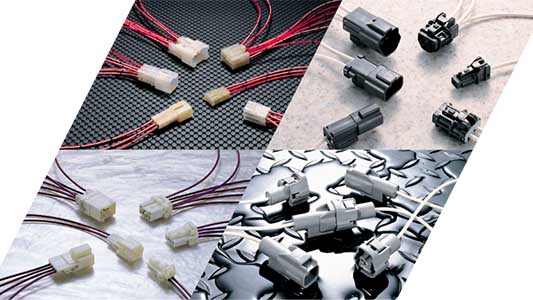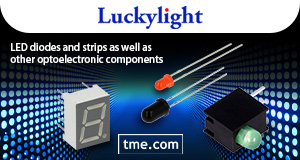The automotive world is changing at lightning speed, and at the heart of this transformation lies a small yet powerful component the connector. Often overlooked, automotive connectors are the unsung heroes of modern mobility. They ensure smooth communication between electronic control units, sensors, and actuators, powering everything from infotainment and navigation to safety systems and electric powertrains. As vehicles evolve into high-tech machines, the global automotive connector market is set to grow from USD 13.52 billion in 2025 to USD 24.08 billion by 2034, fueled by a steady CAGR of 8.19 percent.
Asia Pacific Leads While Europe Picks Up Pace
Asia Pacific has cemented its dominance in the global automotive connectors market, supported by a booming automotive industry, rising electric vehicle (EV) adoption, and a strong supply chain ecosystem. Europe, meanwhile, is gearing up for robust growth during the forecast period, propelled by stringent emission norms, ambitious EV targets, and investments in autonomous driving technologies.
Fiber Optic Connectors Shine Bright
Among product types, fiber optic connectors are taking center stage. As vehicles demand faster and more reliable data transfer, fiber optics deliver superior performance over traditional copper-based solutions. They enable seamless communication for autonomous driving features, advanced driver assistance systems (ADAS), and next-generation infotainment. Lightweight by design, they also help reduce overall vehicle weight, enhancing efficiency especially critical for EVs.
Passenger Cars Drive the Market Forward
Passenger cars remain the largest consumer of automotive connectors. Today’s cars are more than just machines; they are digital ecosystems on wheels. From touchscreens and voice recognition to ADAS and safety systems like airbags and electronic stability control, every feature depends on a robust network of connectors. The rise of electric and hybrid passenger cars has further accelerated the need for high-voltage, high-performance connectors to handle charging systems and battery management.
Wire to Wire Connections Hold the Edge
Connectivity remains the backbone of automotive design, and the wire-to-wire segment dominates the market. These connectors enable seamless power distribution and communication across vehicle systems. As wiring harnesses grow more complex with the integration of infotainment, telematics, and safety features, wire-to-wire connectors play a critical role in ensuring reliability and durability in challenging automotive environments.
AI Becomes a Game Changer
Artificial intelligence is rewriting the rules of the automotive connectors market. Predictive maintenance powered by AI now helps detect wear, corrosion, or faults before they occur, reducing downtime and boosting reliability. AI also assists in design optimization, enabling manufacturers to develop stronger, smarter, and more durable connectors. In autonomous vehicles, AI ensures high-speed, low-latency communication between cameras, radar, LiDAR, and control systems making driving safer and more efficient. Partnerships like the one between Emobi and Autocrypt in July 2024 highlight how AI is finding its way into EV plugs and connectors, signaling a new era of intelligent mobility.
Commercial Vehicles Add Momentum
The surge in commercial vehicle sales worldwide is giving the automotive connector market a major push. Trucks, buses, and vans require complex electrical systems for ADAS, telematics, navigation, and fleet management. As commercial fleets go electric, the demand for robust, high-power connectors intensifies. Safety standards, fleet monitoring, and regulatory compliance further amplify the need for advanced connectors, cementing commercial vehicles as a growth powerhouse for the industry.
Smart Connectors Shape the Road Ahead
The future belongs to smart connectors. Unlike traditional counterparts, these innovative connectors come embedded with sensors that monitor power flow, detect corrosion, and predict failures. Their real-time diagnostic capabilities make them indispensable for fleet management and autonomous driving systems. Smart connectors are already making headlines, such as YOFC’s launch of a smart automotive communication connector in January 2024, designed to support vehicle-mounted ethernet and high-speed data transfer for next-gen cars.
Challenges on the Road
Despite the promising growth, the industry faces challenges. High costs of advanced connectors, particularly for EVs and autonomous systems, remain a barrier in cost-sensitive regions. Increasing design complexity also creates compatibility issues and higher maintenance expenses. Stricter safety and emission regulations, while necessary, add further pressure on manufacturers to balance innovation with compliance.
A Market on the Move
From fiber optics and wire-to-wire solutions to AI-driven maintenance and smart connectors, the automotive connectors market is undergoing a quiet revolution. Every advance brings vehicles closer to being safer, smarter, and more efficient. With Asia Pacific steering the lead, Europe accelerating growth, and global players innovating rapidly, the industry is well on track to reshape mobility. In the years ahead, connectors will no longer remain behind-the-scenes components but rather become central to the vehicles of the future.
About the Author: Shubham Madhukar Desale is a passionate and insights-driven Research Analyst with over five years of experience in market research, including more than four years of specialized expertise in the global automotive industry.Source: https://www.towardsautomotive.com/insights/automotive-connectors-market-sizing












